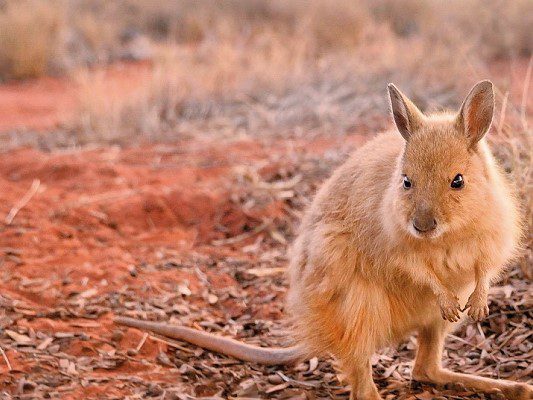Natural Area prides itself on the abilities of our team and strive to support team members with their individual studies and interests. Shannon has been with our team since mid-2021. She recently submitted her thesis for her Master of Science at Edith Cowan University and will be presenting her research at the Biodiversity Conference 2021, being held in September at UWA.
Read on to see what her research was all about.
Potential for resource competition between the boodie (Bettongia lesueur) and mala (Lagorchestes hirsutus) in the fenced Matuwa reserve, central Western Australia
By Shannon Treloar, Dr. Cheryl Lohr, Dr. Anna Hopkins, and Dr. Robert Davis.
Abstract
Translocations to closed systems such as fenced reserves can provide significant conservation benefits to threatened fauna species, however they can also bring forth potential threats. Resources are limited in fenced reserves and natural processes that regulate populations, such as dispersal and predation, are unable to occur. Consequently, there is increased potential for interspecific competition because there are less resources available for partitioning and overpopulation is possible. Interspecific competition may lead to the decline or exclusion of the more sensitive species. We investigated the potential for competition between two native marsupials, boodies (Bettongia lesueur) and mala (Lagorchestes hirsutus), that co-exist in a 1100 ha predator-free fenced reserve located in the arid rangelands of central Western Australia. Resource overlap between coexisting populations of these two species has not been studied previously, but the literature suggests the potential for considerable dietary overlap with possible suppression of the more sensitive mala. We investigated the degree of dietary overlap using scat DNA from non-invasively collected scats, as well as the degree of spatial overlap using scat counts and temporal overlap using camera traps. Results suggest limited potential for significant exploitative competition, with both species displaying different foraging preferences and consuming most primary food items in differing volumes. The species displayed no sign of spatial or temporal avoidance, most likely because dietary partitioning exists so there is limited risk from using the same habitats and having similar activity rhythms. This study will contribute to the successful conservation of boodies and mala and will contribute to gaining a better understanding of how translocation success may be affected by the presence of competition, particularly within a closed environment where resources are limited.
Images
Boodie, Photo by Hugh McGregor (www.aridrecovery.org.au)
Mala (www.australianwildlife.org)


